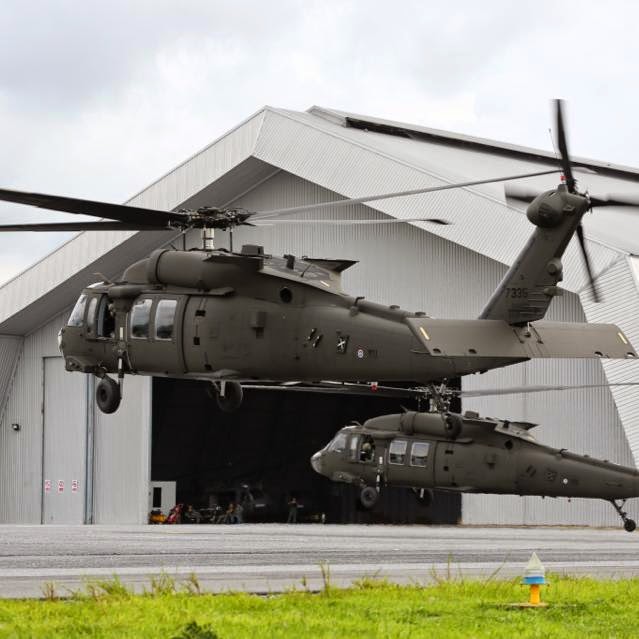Understanding the Skies: UH 60 Helicopter Maintenance Checklist
Understanding the Skies: UH 60 Helicopter Maintenance Checklist
Blog Article
Understanding the Mechanics and Design Behind Uh 60 Helicopters
The UH-60 helicopter, frequently recognized as the Black Hawk, stands as a pinnacle of contemporary rotorcraft modern technology, embodying a blend of robust design and detailed mechanics. As we peel back the layers of the UH-60's style, a globe of intricate systems and precise engineering comes to light.
Background of UH-60 Helicopters
The background of UH-60 helicopters traces back to the late 1970s when the USA Military looked for a sophisticated and versatile energy helicopter to change its aging fleet. In action to this requirement, the Sikorsky Aircraft Firm established the UH-60 Black Hawk helicopter. Introduced in 1979, the UH-60 quickly came to be a staple in military operations due to its outstanding abilities.
The UH-60 was developed to master a variety of goals, consisting of troop transportation, medical evacuation, digital warfare, and unique operations. Its capacity to adapt to various functions made it an important property to the U.S. uh 60. Military and other army forces around the world
Over the years, the UH-60 system has actually gone through several upgrades and variants to enhance its efficiency and equal developing goal demands. These helicopters have actually seen considerable service in problems such as the Gulf War, Afghanistan, and Iraq, showcasing their integrity and flexibility in varied operational atmospheres. The UH-60's rich background is a testament to its long-lasting tradition as a top utility helicopter.

Engine and Power Systems
Making use of sophisticated propulsion modern technology, UH-60 helicopters are furnished with sophisticated engine and power systems to guarantee optimal efficiency and dependability in a variety of operational scenarios. The UH-60, frequently called the Black Hawk, is powered by 2 General Electric T700-GE-701D engines, each with the ability of delivering up to 1,940 shaft horse power. These turboshaft engines offer the necessary drive for the helicopter to accomplish its goals successfully, including troop transportation, medical evacuation, and battle support.

Rotor System and The Rules Of Aerodynamics
How do the rotor system and aerodynamics of UH-60 helicopters add to their functional effectiveness and trip capabilities? The rotor system of the UH-60 helicopter plays an important duty in offering lift and propulsion. The UH-60 includes a four-bladed, completely expressed rotor system that permits high ability to move and security throughout flight. This layout enables the helicopter to execute a vast array of goals, from transportation and clinical emptying to battle procedures.
The rules of aerodynamics also play a key duty in the efficiency of UH-60 helicopters. The structured fuselage and blades blade design decrease drag, enabling the helicopter to accomplish greater rates and far better gas efficiency. The wind resistant design of the UH-60 additionally adds to its ability to run in varied ecological conditions, including high elevations and warm temperatures.
Avionics and Flight Control Systems

In its intricate coordination with the rotor system and aerodynamics of UH-60 helicopters, the avionics and flight control systems develop an essential network of innovations forming the aircraft's functional capacities. In the UH-60, these systems include electronic display screens, communication radios, GPS navigating, climate radar, and autopilot systems.
The flight control systems of the UH-60 are accountable for equating the pilot's inputs right into the ideal adjustments to the rotor system, making sure stable trip and maneuverability. These systems consist of hydraulic actuators, servos, and computer systems that interact to regulate the primary and tail blades, as well as various other flight control surface official website areas. By click to find out more precisely managing the helicopter's flight characteristics, these systems make it possible for pilots to execute a large range of goals, from transport and search-and-rescue to battle procedures, with accuracy and self-confidence.
Duty and Applications in Air Travel
The function and applications of avionics and flight control systems in aeronautics are essential to guaranteeing the secure and reliable procedure of aircraft, including UH-60 helicopters. Avionics systems in UH-60 helicopters incorporate a series of digital systems that help in navigating, interaction, monitoring, and regulating various airplane functions. These systems include electronic displays, auto-pilot systems, interaction radios, general practitioner navigation devices, and weather radar. Trip control systems play a vital duty in maneuvering the helicopter in the air, preserving security, and guaranteeing specific activities. The fly-by-wire innovation utilized in modern-day UH-60 helicopters converts pilot inputs right into electronic signals, which are then interpreted by the flight control computers to change the airplane's control surface areas. In addition, these why not try here systems include safety functions such as auto-pilot settings, surface awareness warning systems, and security enhancement systems to boost the general safety and operational capabilities of the UH-60 helicopters in numerous objectives, consisting of army transportation, medical discharge, search and rescue, and airborne firefighting.
Final Thought
In conclusion, the UH-60 helicopter is a versatile airplane with an abundant history and progressed design. Its engine and power systems, rotor system, the rules of aerodynamics, avionics, and trip control systems all work with each other to make it a reliable and reputable machine.
In its elaborate control with the rotor system and aerodynamics of UH-60 helicopters, the avionics and trip control systems develop a critical network of innovations forming the airplane's operational abilities.The trip control systems of the UH-60 are liable for translating the pilot's inputs right into the suitable modifications to the blades system, ensuring stable flight and maneuverability. Avionics systems in UH-60 helicopters include an array of digital systems that help in navigating, communication, monitoring, and controlling different aircraft functions. Furthermore, these systems integrate safety and security attributes such as auto-pilot settings, surface recognition advising systems, and security enhancement systems to boost the total safety and security and functional capacities of the UH-60 helicopters in numerous goals, consisting of army transportation, clinical discharge, search and rescue, and airborne firefighting.
Its engine and power systems, blades system, the rules of aerodynamics, avionics, and trip control systems all work together to make it a trustworthy and effective maker.
Report this page